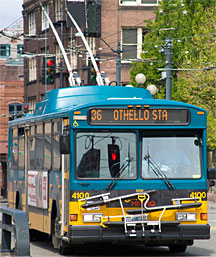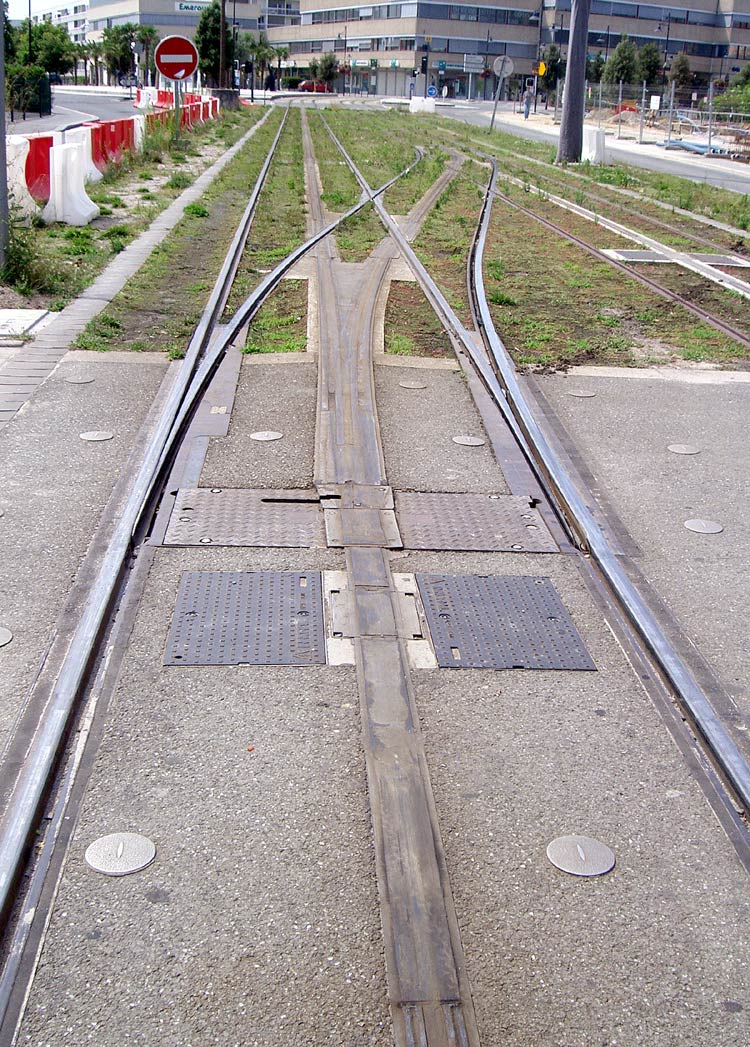Nehmo
10 kW
The main streets of Chicago (Ill, USA) used to be strung with overhead wires and e-buses with connectors called pantographs ran on major routes. Then the electric buses were replaced with gas ones and the wires came down. Back then, the prevailing view of Chicago's population was that the old electric was being replaced with modern gas.
The eHighway concept
Siemens has a transportation concept for freight that involves stringing some wires. I'm not sure why they didn't extend the concept to people traffic.
I don't know. I was thinking inductive power transfer was the solution. I suppose the losses are lower with direct contact, but it doesn't look right.

A key part of the system is the intelligent pantograph. It's an advancement over the old arrangement in that the connection can be made or broken easily and even automatically. [youtube]XiOuBrFC8NM[/youtube]
The eHighway concept
Siemens has a transportation concept for freight that involves stringing some wires. I'm not sure why they didn't extend the concept to people traffic.
I don't know. I was thinking inductive power transfer was the solution. I suppose the losses are lower with direct contact, but it doesn't look right.

A key part of the system is the intelligent pantograph. It's an advancement over the old arrangement in that the connection can be made or broken easily and even automatically. [youtube]XiOuBrFC8NM[/youtube]




